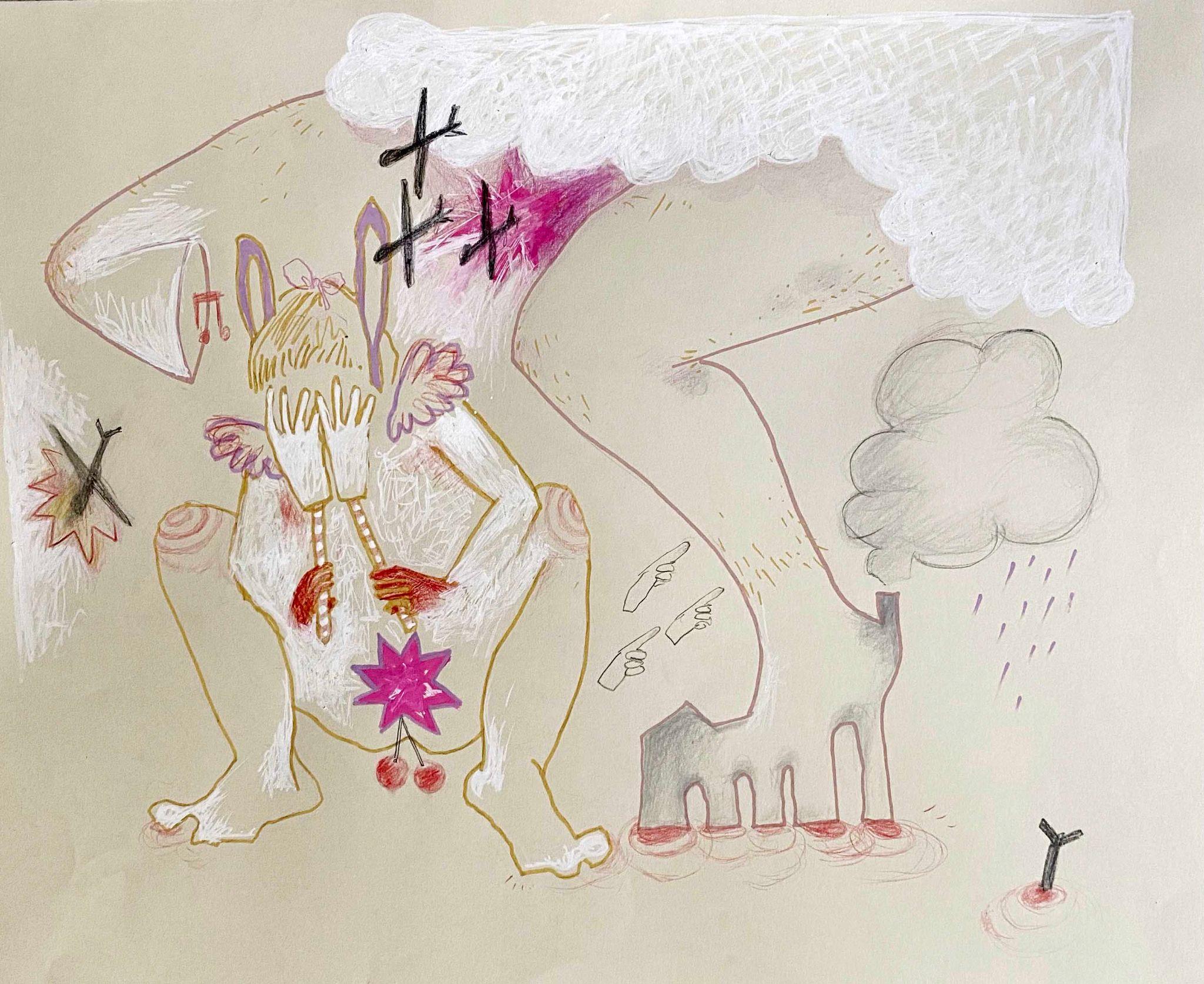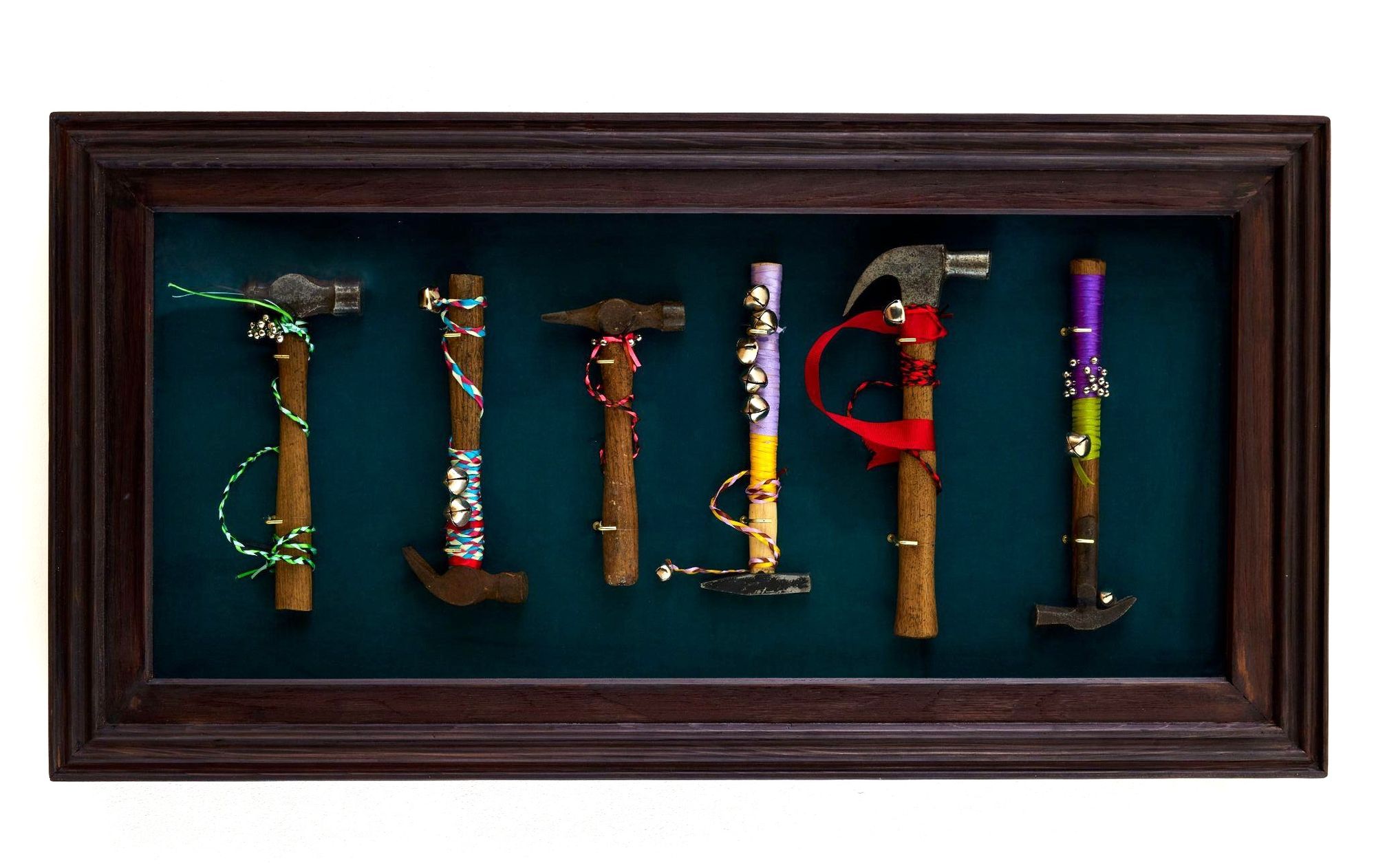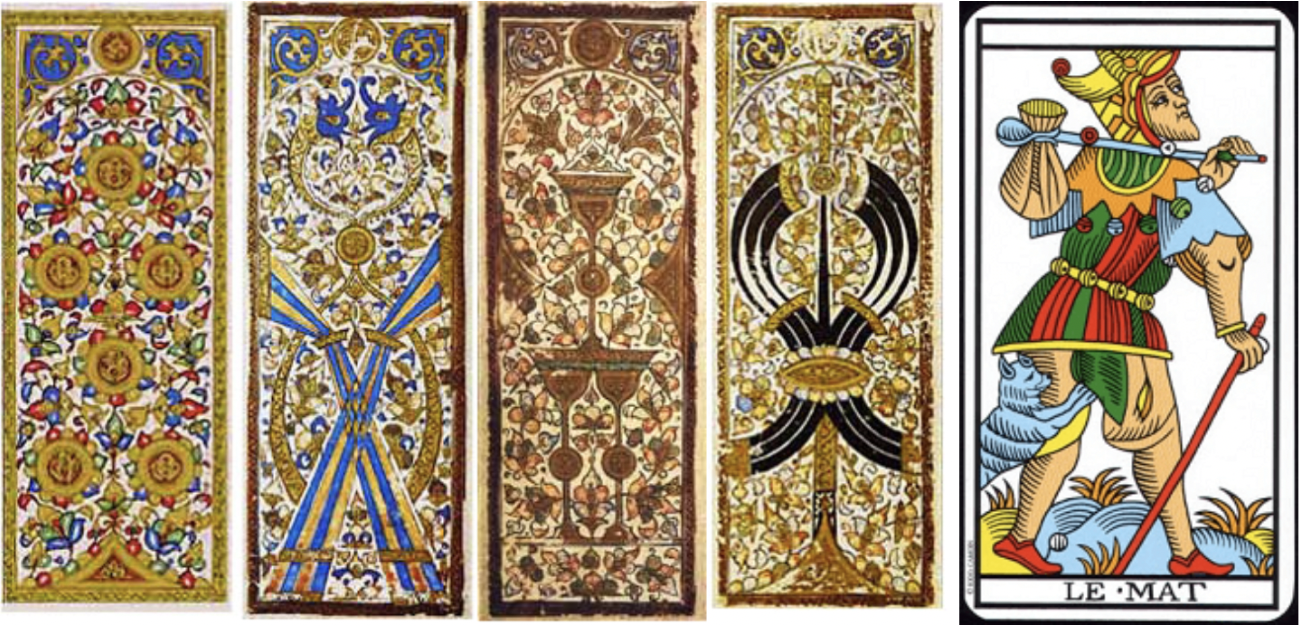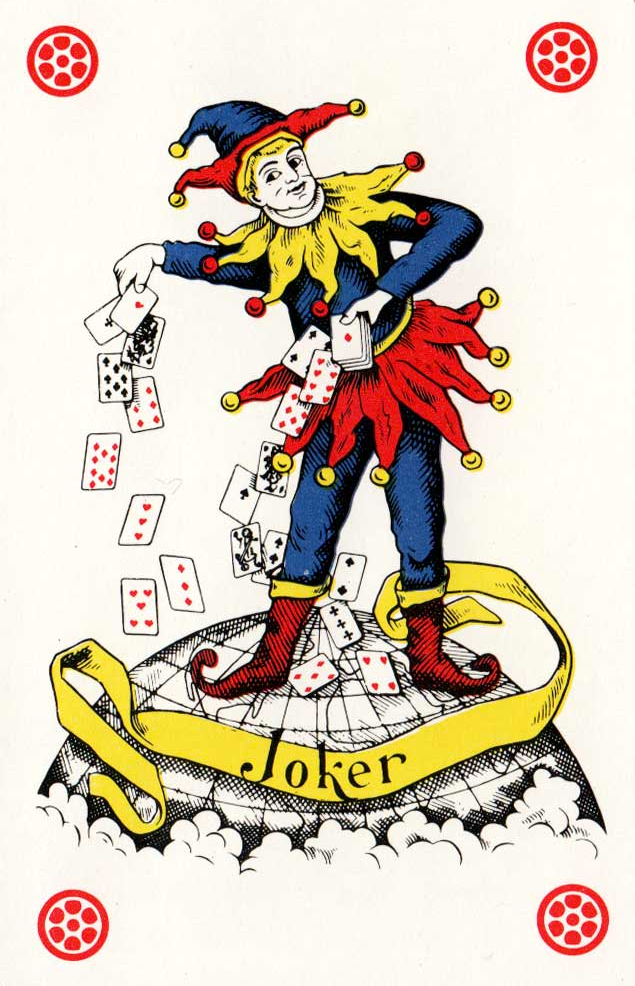Lama El Khatib in conversation with Jesse Darling
LK: I keep returning to the figure of the jester ever since we read Sylvia Wynter’s 1984 essay, “The Ceremony Must be Found: After Humanism,” together. The jester as the performer of heresy and heresy as a simultaneously destructive and constructive force capable of overturning the normative order of dominant systems of thought. Wynter’s jester is some sort of figure—historic and to-come—of a revolutionary rewriting of our knowledge. But the jester exists only in its dynamic position vis-a-vis the priest. In other words, the jester embodies the fundamental antagonistic oscillation between heresy and dogma that threads the history of thought and knowledge production. To quote Wynter, who is herself quoting Polish philosopher Leszek Kolakowski: “whereby everything that is new grows out of the permanent need to question all existing absolutes, with every current of thought that tries to break away from 'existing finalities coming in turn to establish other ones of its own,' so that though 'every rebellion is therefore metamorphosed into a conservative state'"; nevertheless, "each of these movements makes room for the next phase where its own absolutes will, in return, be the target of criticism.”1
Is that cycle inescapable? And what is a heresy that inevitably becomes a new normative? Are all jesters bearers of a heretical drive? Is the jester then the one that ‘makes room’ or produces a gap? And where is the humor in all this?
Out of Wynter’s elaborate schema, besides following her acute cosmological/political project, I also developed a somewhat simplistic visual fixation. What I’m trying to say is that I’ve been starting to see the jester everywhere. Well, mostly an overrepresented (to use Wynter’s word) image of him—the clothes, the colors, etc. I also found the jester in the drawing that was used for the poster of your Modern Art Oxford show, No Medals, No Ribbons. Now, I can’t unsee it. Is that work titled Big Voice?

JD: Yes. Big Voice, or Giant Voice, is the military term for the emergency comms broadcast over a speaker system in a military base. I hate militarism but I see it everywhere; it has its own clownishness—the costumes, whistles and bells, guns. It is—in a Judith Butler sense—highly performative. I can talk about the drawing, but I can’t claim that any of these thoughts were conscious when I was drawing it. Drawing is a place where the archetypes of one’s unconscious tend to emerge, especially because I'm not a very skilled draftsman. And since my unconscious operates a standard-issue, Western/European, Christian-eschatological, white-coded imaginary, there's a necessary gap in between what emerges and the decisions I make. That gap is where I insert my politics, or whichever abolitionist streak that wants to expose these unconscious archetypes as arbitrary and particular, and to fuck with them rather than take them on the terms by which they have become lodged in the dominant culture. You could see the main figure in the drawing as ‘the subject’ embedded in the terms of a dominant culture, which you see playing out all around it in various metaphorical or literal forms. And the subject is holding a pair of (white) hands, distinct from its own hands, in front of its eyes. This subject doesn’t want to see—or rather, to accept—what is going on around it, and it finds itself in possession of a flimsy technology by which it is able to opt out, however pathetically. And this technology could be among other things whiteness itself, always partially prophylactic but real enough as an extension of one’s conscious or unconscious desire in the world, and its protective aspect in this case is superficial and cosmetic. It’s also like the punchline of the famous joke about the clown who goes to the doctor for despair, and the doctor refers him to a performance of the great clown Pagliacci that afternoon. I guess this configures the sovereign subject of colonial-capitalist modernity as the great clown Pagliacci, which is also a riff on the conceit by which ‘the oppressor’ is always other people, you know? That’s some clown shit. Or jester, if you prefer. It might or might not be some kind of self-portrait; it both is and isn’t me, like everybody who shows up in one’s dreams.

LK: Clowns, jesters—should we think about them interchangeably for the purposes of our conversation? I know they have different histories, but I think the idea I’m circling around is one and the same, which is that they are (subversive) figures that produce sites for potential (productive) humor. I'm curious about the Jess-ter.
JD: I did train as a clown for a while in a circus. There was a general daily training, very physical, taking turns to jump a huge rope that rose and fell in rhythm as we ran around and around and through. Circus performers need to be attuned to one another’s bodies through a proprioceptive sense that can’t be taught, only practiced. The head clown spoke a hybrid language composed of French, Flemish, Brazilian Portuguese, and obsolete American English slang, but made himself understood mainly through the language of his body. It was a brutal training! In the beginning he would call us one by one to ‘the stage’ and we would each try to do something, anything, that would make him laugh. He was generous with his laughter but just as quick to chew somebody out for losing the moment, dropping the ball, or overstaying their welcome. We were striving for our inner clowns. Of course, striving is never a good look, and when the clown saw us striving, he would scream us off the stage. Nuar Alsadir, in her piece “Clown School,” remembers a similar dynamic in her own training. “His provocations knocked the lids off the prototypes we were hiding inside of, in a similar way to how many psychoanalysts, in the attempt to understand a person’s conflicts, begin by analyzing their defenses—what is being used as cover—before moving on to what is being covered up and why.”2 The point is, I was never very funny. The best show I ever turned out for our teacher was when I got up on stage and just started crying. He laughed and laughed and laughed.
LK: Did you want to be funny? As in, did you strive to be a ‘good’ clown?
JD: I don’t know. I wanted a way, any way, to be safe on stage, or maybe just safe in my body, to find some mode of performing myself that would stick. Honestly I don’t think I ever found it, though I’ve tried in all kinds of ways. To quote Alsadir again: “Both psychoanalysis and the art of clowning—though in radically different ways—create a path towards the unconscious, making it easier to access the unsocialized self, or, in Nietzsche’s terms, to ‘become the one you are.’ Psychoanalyst D.W. Winnicott considered play ‘the gateway to the unconscious,’ which he divided into two parts: the repressed unconscious that is to remain hidden and the rest of the unconscious that “each individual wants to get to know” by way of ‘play,’ which, “like dreams, serves the function of self-revelation.” In clown school, the part of the mind that psychoanalysis tries to reveal—by analyzing material brought into session, including dreams or play—is referred to as a person’s clown.”3
LK: So there is a jester within everybody? Alsadir’s framing seems to imply an inherent freedom accompanying the art of clowning. We can read this similarly to Wynter’s jester, whose heresy drags down dominant systems of knowledge. Alsadir’s unsocialized self could perhaps be read in parallel to Wynter’s re-opening of the question of who and what we are against the genres of ‘Man.’ But let’s think about this again with Pagliacci. In that example, and in what you described through Big Voice, clowning appears as an act that doesn’t so much destabilize the order as mask it and thus maintain its standing. The clown is only a front to the priest, the militant, the officer, etc.
JD: I’m wondering if the jester and the officer aren’t similar figures in some way, or the shadow of one another, in the binarisms of colonial modernity. But it seems like the clown is also something like the shaman, who embodies the unconscious of a community and moves through or rehearses the sickness of this unconscious for the common good. But then what about a situation in which the unconscious of a community is a kind of gendered militarism, as per Klaus Theweleit? Maybe the queer becomes figured then as a kind of clown. Butch Harlequin with his magic wand and the queeny Columbine—all played by men, of course (usual caveats for the use of gendered nouns).
LK: Yes. What if what is dragged out in the clowning, is precisely that which you describe: a crappy officer. Is the act of jestering itself enough to ‘stop the cop’?
JD: I remember that the figure of Trump was seen as a joke, a clown. Lots of funnies about his hair, his face, his syntax. The liberal establishment did not recognise the threat. They were rolling in the aisles as he clowned his way to the top. I was looking around for jesters in the Levantine folklore and came upon the play Al-Mouharej, by the great Syrian playwright Muhammad al-Maghout. The play narrates a version of Othello, as performed by a bunch of “self-proclaimed ‘artistes’ in whose faces the door of life has been slammed—so they have banged on the door of art until they broke it down.”4 I was excited because this connection between Othello and the jester is also a feature of the Wynter essay we’ve been reading together. I went to the reading group telegram channel to ask someone to lend me their JSTOR access for a translation, and Rana Issa observed that the actor who played Ghawwar—who Rana describes as ‘the Arabic Charlie Chaplin’—became in the end a regime supporter.

You could say that Trump is an example of the jester-priest cycle, to paraphrase Rana Issa.
LK: Since you mention Trump, here is a quote from an interview with Lauren Berlant that I find myself returning to at many points of our conversation.5 They write, in relation to their work on humorless comedy, that:
“The protagonists are all committed sovereigns who need things to appear a certain way. Humorless comedy is a comedy of compulsive sovereignty. The texts are Scorsese’s The King of Comedy, Colson Whitehead’s “The Comedian,” and Lisa Kudrow’s The Comeback and Web Therapy, all brilliant. The comedy they generate involves the spectacle of a radical willfulness that generates disaster after disaster, like a Road Runner cartoon. The works are barely comedic because the protagonists insist on bringing down any person or world that threatens their ambition. The pleasure of the text is comedic because technically, as spectators, we are on the side of the protagonist’s humorless ambition to pursue the pseudo-self-transcendence of a celebrity status. This of course links humorless comedy to Trump and many phantasmatic sovereigns.”
Perhaps humorless comedy is that which can move between the jester and its shadow.
This figure of the jester—despite its somewhat over-written history—presents me with a certain drive towards failure, with spontaneity, confusion, an incongruity between intention and action. Maybe jestering is just a moment. Or to think through Wynter, maybe it's that making room, a possible gap created from which to rethink, restructure, overturn…
JD: I just finished making a show in which I was thinking a lot about the (complicated, legitimate, and satire-worthy) longing for a ‘simpler time’ in which work was work—and men were men, etc—among other things, thinking through the ways that land rites and land rights get bound up with these identitarian forms of sovereignty. I made a lot of hammers, with bells and ribbons on them. A reification flex, to make these into instruments, playthings, or ritual objects, and to render them essentially useless as tools. I think I was trying to poke around in this space of incongruity ‘between intention and action,’ as you put it, to conjure something ambiguous that has the weight of wood and metal and what you know a hammer can do, as well as the lightness of bells and ribbons, with those associations of ritual and rhythm and play. I was also thinking of the European folk figure Mr Punch (elsewhere known as Kasperle, or Guignol) and the ‘slapstick’ with which he beats his wife and child, commits multiple murders, and makes everyone laugh. His stick is no less fatal for having bells and ribbons on it. I was trying to make a soft and hard provocation, or proposition. And the whole time I was thinking of you and our conversation about the jester.

LK: In the case of the jester the tools of his labor are somehow also playthings. I think that is an interesting clash. Here is a funny image: the jester is also doubled as his own tool.

Somehow, this generic image frames this idea of the jester as both lacking a body and a bearer of an excess of bodily qualities.
JD: Yes, the jester’s stick as phallus, weapon, or magic wand. A phallus doesn’t have to be a weapon of course, but sometimes it is; and sometimes it’s an archetypal, genderless symbol against the sterility and respectability demanded and enforced by the regime. Maybe the jester exists in a parody of law, which I increasingly believe to be a phenomenon that has evolved out of the Western history of magic—the slapstick a parody of the gavel. Regarding the jester’s tool, isn’t it also the case that the tools of any worker are in some sense just extensions of the self under a certain paradigm? And meanwhile work has never been more ineffable. This makes me think of your ongoing study on financial derivatives. The market as constitutive of a social unconscious. In this regard I can see where the libido comes from in terms of an attachment to a figure who both represents and thrives in the space of incongruity, ambivalence and liminality, and maybe this is something more akin to ‘the trickster’ archetype. The trickster as jester as magician as subversive force. On that Wikipedia page there’s a quote: “Many native traditions held clowns and tricksters as essential to any contact with the sacred. People could not pray until they had laughed, because laughter opens and frees from rigid preconception. Humans had to have tricksters within the most sacred ceremonies for fear that they forget the sacred comes through upset, reversal, surprise. The trickster in most native traditions is essential to creation, to birth.”6 and yet, “One of the most important distinctions is that ‘we can see in the Native American trickster an openness to life's multiplicity and paradoxes largely missing in the modern Euro-American moral tradition.’”7
Even though I now wonder how we could figure a subversive trickster on the left. There are plenty on the right.
LK: I recently read in Beatrice K. Otto’s Fools Are Everywhere: The Court Jester Around the World, that the now-established idea of the classic ‘court jester’ (being a subversive figure with the power to influence a monarchy) is a strong and self-reproducing myth. Otto writes:
“There are many stories which show a jester as the only person who could counsel a stubborn king, and as such the myth of the court jester suggests that jesters could act as a check on the whimsical power of absolute monarchy. . . . The respected, responsible, official jesters only functioned in small historical windows of possibility, for example: fourteenth and fifteenth century Italy and around the turn of the seventeenth century in England.”
JD: You know, 14th and 15th century Italy is when you have the emergence of tarot cards, which began life as a kind of meme in the sense of being widely distributed images that evolved through circulation. Card games were an important social currency, both in business and in pleasure, and one story suggests that various forms of propaganda began to appear on the backs of these cards (ads, basically, for services and products and ideologies) which—together with the incorporation of a gaming system from an apocryphal “Mamluk Deck” that followed the invention of paper from Egypt into Europe—then evolved into a divination system over time. The major arcana is a set of trump cards, essentially, along with one numberless ‘wild’ card: a card whose value is mutable, or 0. In a standard deck this card appears as the Joker. And perhaps you know, but the fool is at the beginning of the linear narrative evoked in the major arcana of divinatory Tarot as a kind of hero’s journey. I think about the 1 and 0 in binary code sometimes and the way 1 is on, or true, and 0 is off, or false. Lights on; lights off. In the darkness, chaos; nature; Other—a projection of all that cannot be contained by the project of enlightenment. How post-cartesian, post-enlightenment worldbuilding is built around binaries. In this game of trumps we’re playing right now in which we’re trying to figure out whether the jester is a cop or an ineffable figure of revolutionary change, the fact that [he] is figured as 0 (as opposed to the sovereign [Man] 1, as per Sylvia Wynter) is a point scored towards the latter. And it seems appropriate that after all this talking and writing, we are no further into the fool’s journey than we were when we began it. Full circle! The divinatory paradigm plays itself out and we all get clowned in the end.


[1] Wynter, Sylvia. “The Ceremony Must Be Found: After Humanism.” Boundary 2 (1984): 19–70.
[2] Alsadir, Nuar. “Clown School.” Granta, October 31, 2017.
[3] Ibid.
[4] Myers, Robert and Neda Saab. Modern and Contemporary Political Theatre from the Levant: A Critical Anthology. Netherlands: Brill, 2019: 109.
[5] Markbreiter, Charlie. “Can’t Take a Joke: An interview with Lauren Berlant.” The New Inquiry, March 22, 2019.
[6] Gibbens, Byrd; quoted from letter to the author in Carlin, George. Napalm & Silly Putty. Hachette UK, 2001.
[7] Ballinger, Franchot. "Ambigere: the euro-american Picaro and the native American trickster." Melus 17, no. 1 (1991): 21–38.
[8] Otto, Beatrice K. Fools are everywhere: The court jester around the world. University of Chicago Press, 2001.
Lama El Khatib writes, draws, and makes objects. She is trained in architecture and continues to study art history and philosophy. Her practice examines spatial relations along/as aesthetic, political, and cultural lines—taking up the architectural as both ground and medium for social thought.
Jesse Darling is a poet and artist working in various media to ‘denaturalise’ the psychic life of petrocolonial modernity. JD lives and works in Berlin.
This text was commissioned with the generous support of Goethe-Institut Lebanon.


